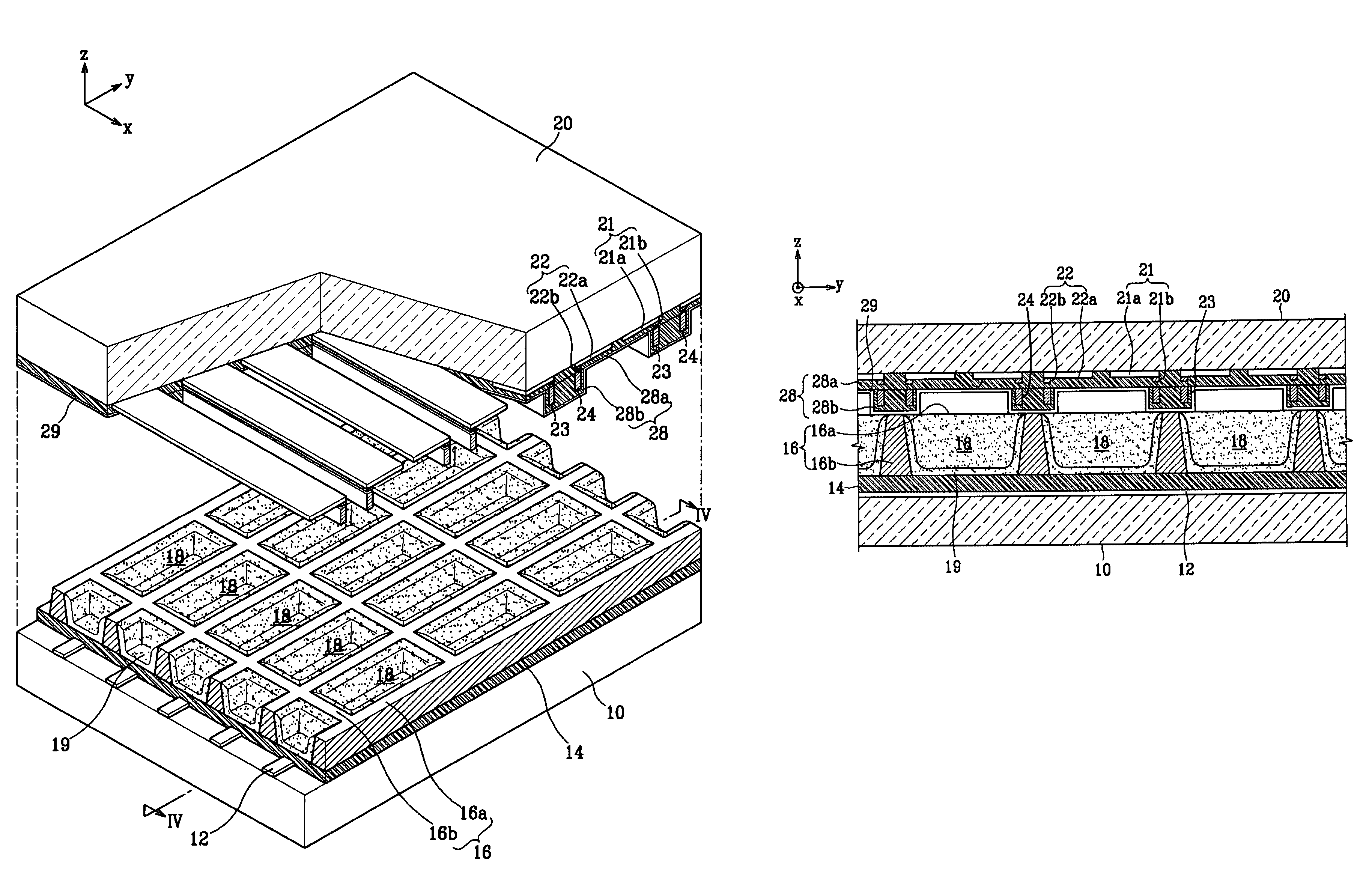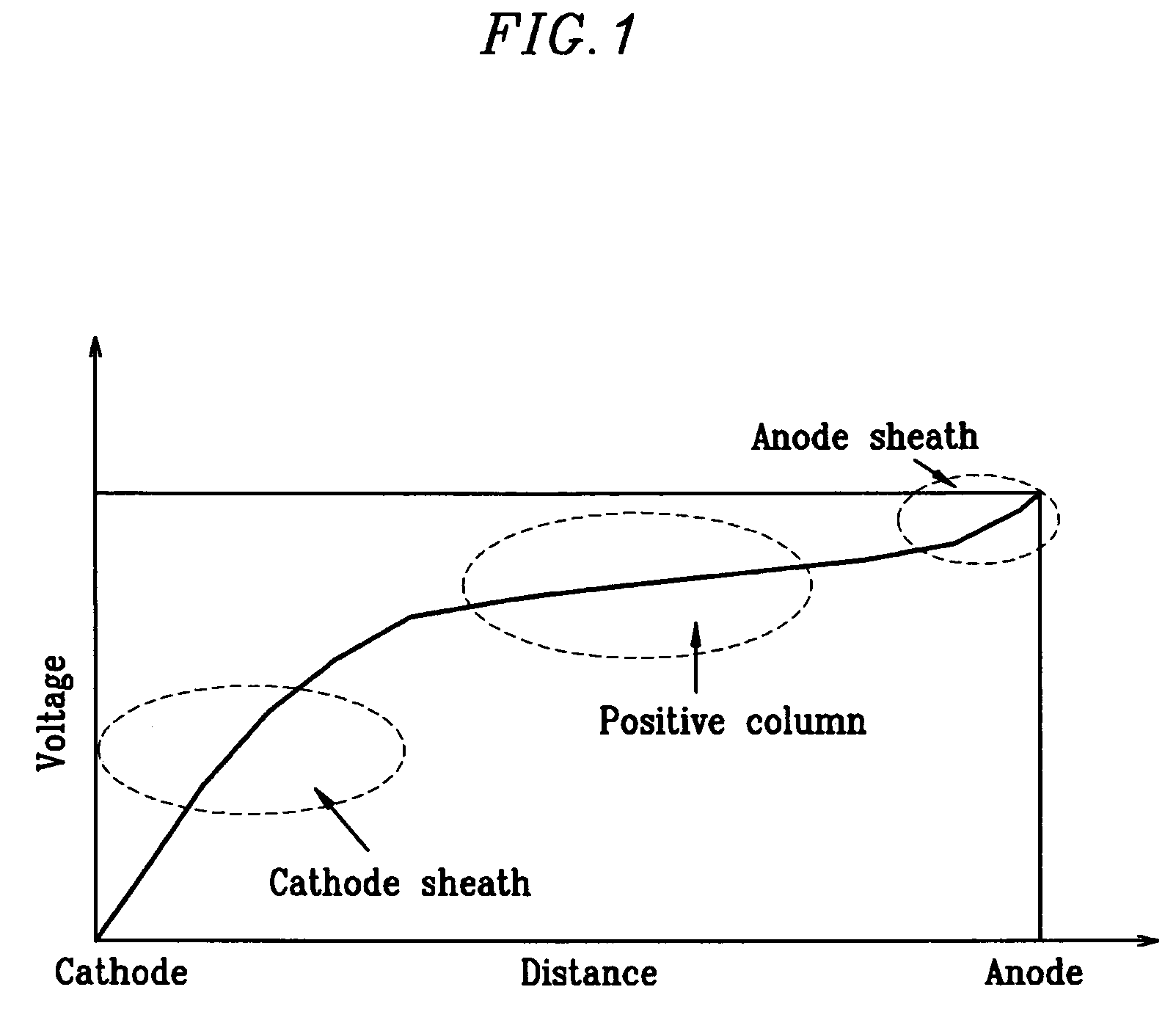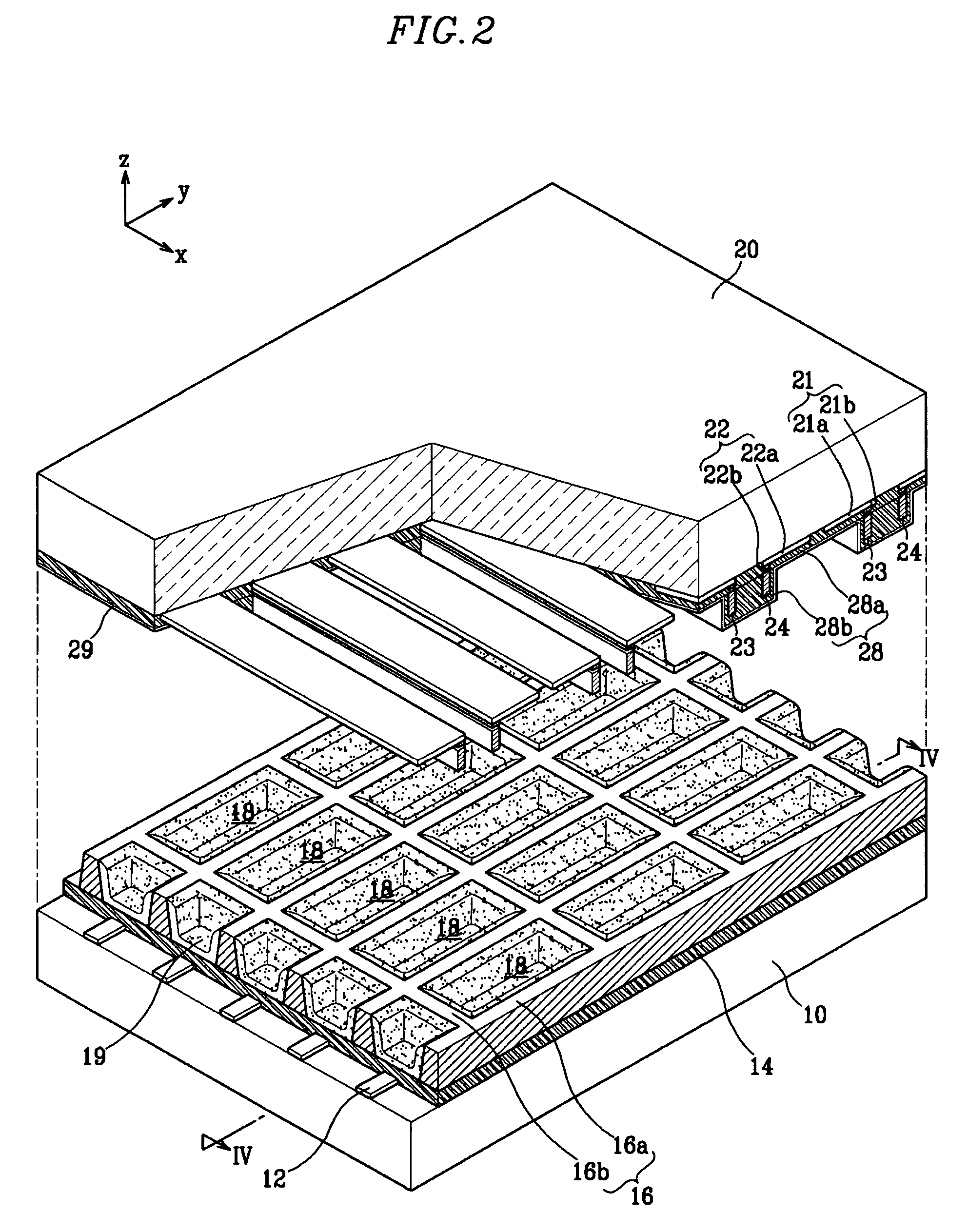Plasma display panel (PDP)
a technology of plasma and display panel, which is applied in the direction of instruments, tubes with electrostatic control, and address electrodes, etc., can solve the problems affecting the efficiency of discharge, etc., to achieve the effect of reducing the intensity of discharg
- Summary
- Abstract
- Description
- Claims
- Application Information
AI Technical Summary
Benefits of technology
Problems solved by technology
Method used
Image
Examples
first embodiment
[0081]FIG. 2 is an exploded perspective view of the PDP according to the present invention. FIG. 3 is a plan view of the structure of electrodes and discharge cells in the PDP. FIG. 4 is a cross-sectional view of the PDP taken along the line IV-IV in FIG. 2.
[0082]Referring to FIGS. 2 to 4, the PDP according to the present embodiment includes a first substrate 10 (hereinafter, referred to as a “rear substrate”) and a second substrate 20 (hereinafter, referred to as a “front substrate”), which are disposed opposite to each other with a predetermined distance therebetween, and a plurality of discharge cells 18, which are defined by barrier ribs 16, in a space between the two substrates 10 and 20. Phosphor layers 19, which absorb ultraviolet light rays and emit a visible light, are formed within the discharge cells 18 along the barrier ribs and the bottom surface. The phosphor layers 19 are filled with a discharge gas (e.g., a mixed gas including Xenon (Xe), Neon (Ne) and the like) so t...
second embodiment
[0105]FIG. 8 is a plan view of the structure of electrodes and discharge cells in a PDP according to the present invention.
[0106]In the PDP according to the present embodiment, in the same manner as the first embodiment, third and third electrodes 33 and 34 are formed in the front substrate so as to be separated from the first and second electrodes 21 and 22. The third and fourth electrodes 33 and 34 are projected toward the rear substrate in a direction away from the front substrate. The third and fourth electrodes 33 and 34 are formed to face each other with a space therebetween. The space can induce an opposite discharge between the third and fourth electrodes 33 and 34 opposing each other. These third and fourth electrodes 33 and 34 are preferably made of a metal.
[0107]Referring to FIG. 8, in the PDP according to the present embodiment, each of the third and fourth electrodes 33 and 34 includes a plurality of unit electrodes, which are separated from each other and arranged para...
third embodiment
[0108]FIGS. 9A to 9D are cross-sectional views of a PDP according to the present invention, and show the size and location of a cathode spot and an anode spot depending upon a time after a discharge has occurred. Different signal voltage generators supply different voltages V1 to V4 to respective electrodes.
[0109]In the present embodiment, a third electrode 23 has a voltage higher than that of a first electrode 21, and a fourth electrode 24 has a voltage higher than that of a second electrode 22.
[0110]The first and third electrodes 21 and 23 are connected to different signal voltage generators (not shown), respectively, and can receive the signal voltages V1 and V3, respectively. The voltage V3 supplied to the third electrode 23 is higher than the voltage V1 supplied to the first electrode 21.
[0111]Furthermore, the second and fourth electrodes 22 and 24 are respectively connected to different signal voltage generators (not shown), and can receive the signal voltages V2 and V4. The v...
PUM
 Login to View More
Login to View More Abstract
Description
Claims
Application Information
 Login to View More
Login to View More - R&D
- Intellectual Property
- Life Sciences
- Materials
- Tech Scout
- Unparalleled Data Quality
- Higher Quality Content
- 60% Fewer Hallucinations
Browse by: Latest US Patents, China's latest patents, Technical Efficacy Thesaurus, Application Domain, Technology Topic, Popular Technical Reports.
© 2025 PatSnap. All rights reserved.Legal|Privacy policy|Modern Slavery Act Transparency Statement|Sitemap|About US| Contact US: help@patsnap.com



